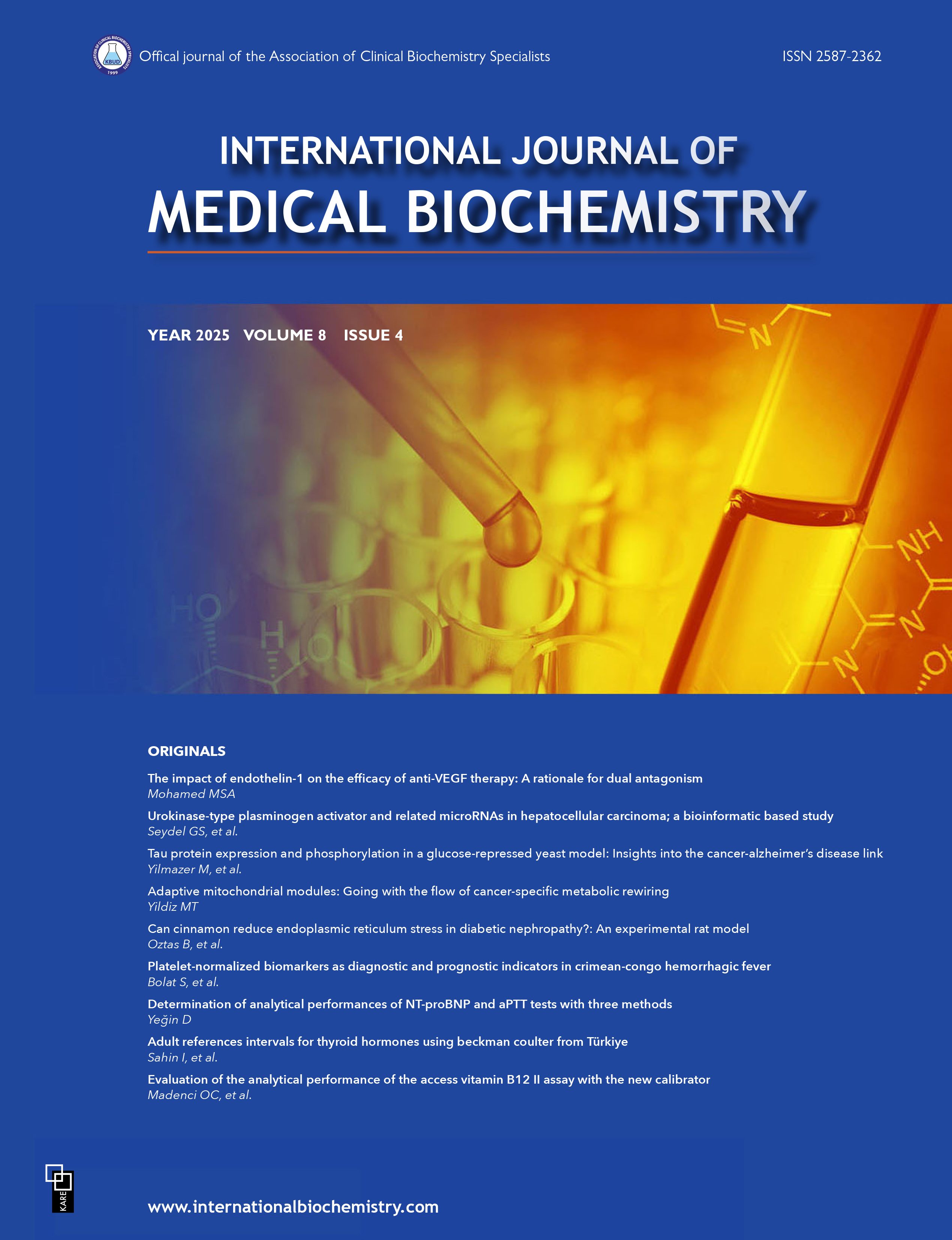The most common preanalytic problem of sweat testing: Insufficient sweat volume
Aysegul Ozgenc1, Nesibe Esra Yasar2, Mine Kucur1, Ibrahim Murat Bolayirli1, Dildar Konukoglu11Department of Medical Biochemistry, Cerrahpasa Faculty of Medicine, Istanbul University-Cerrahpasa, Istanbul, Turkey2Republic of Turkey, Ministry of Health Kars Harakani Public Hospital, Kars, Turkey
INTRODUCTION: A sweat test is the gold standard method for the diagnosis of cystic fibrosis (CF). The most important preanalytical error for sweat testing is insufficient sweat volume. The aim of this study was to determine rates of insufficient sweat volume and evaluate the relationship of sweat volume with demographic characteristics of patients, as well as the implementation of corrective preventive actions.
METHODS: This study was performed retrospectively in the sweat test laboratory of the Cerrahpasa Faculty of Medicine of Istanbul University-Cerrahpasa. A total of 545 specimens that were referred to the laboratory between May and December 2016 were evaluated. Sweating was stimulated with pilocarpine iontophoresis, and the Macroduct Coil System (Wescor, Inc., Logan, UT, USA) was used as the sweat collection system. Sweat volume <15 μL was evaluated as quantity not sufficient (QNS). A chi-square test was used for statistical analysis; p<0.05 was considered significant.
RESULTS: The QNS rate in the study laboratory was 13.8% for infants ≤3 months of age and 6% for patients aged >3 months (p=0.019). There was no significant difference in the QNS ratios according to gender (p=1.000) or the season when the test was applied (p=0.181).
DISCUSSION AND CONCLUSION: The determination of QNS rates is a crucial step in the standardization of the preanalytical conditions of a sweat test. In this study, the QNS rate was above that recommended by the Cystic Fibrosis Foundation (<10% for infants ≤3 months of age, <5% for patients >3 months). High QNS ratios may be due to the inadequacy of optimization of pre-test preparation. Laboratory staff and parents should be well informed about preanalytical factors before a sweat analysis is performed in order to reduce the QNS rate.
Keywords: Cystic fibrosis, preanalytical phase, quantity not sufficient, sweat collection
Manuscript Language: English







